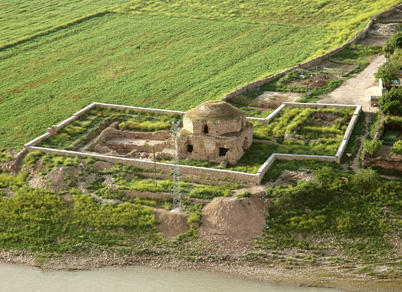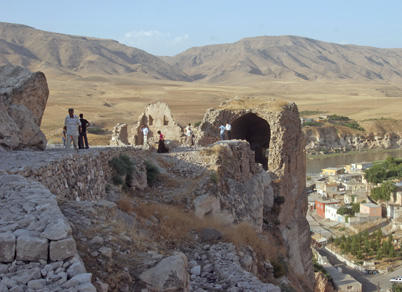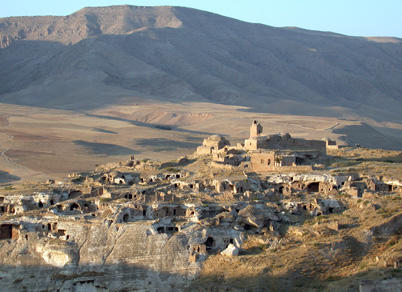Hasankeyf
2008 World Monuments Watch
With its strategic position on the Tigris, the ancient cliff city of Hasankeyf long served as the cultural boundary between the Anatolian plateau and Mesopotamia, prospering as a fortified stronghold and commercial center along the Silk Road. Marco Polo likely crossed the Tigris here on his way to China. Following the fourteenth-century Mongol invasion of the area, however, Hasankeyf fell into decline. The city eventually became part of the Ottoman Empire and is now within modern Turkey. After World War I, Hasankeyf was abandoned, leaving only a few people living in its ancient caves.
Hasankeyf was included on the 2008 World Monuments Watch when it was threatened by the Ilisu Dam project. The Ilisu Consortium planned to flood the site by 2013, and proposed to move the architectural remains of Hasankeyf to another location. The problems with this plan were numerous, most notably that the character of the site is drawn from its location on the Tigris River and its cliffs and caves. Water management had long been a concern for Turkey and its neighbors, and the issue still continues to grow as a threat to cultural heritage sites. Hasankeyf’s placement on the Watch was intended to raise awareness of this wider threat, while also encouraging the Ilisu Consortium to develop more sympathetic plans for the ancient city.
Since the Watch
In December 2008, Austrian, German, and Swiss underwriters of the Ilısu Dam project ordered a 180-day suspension of work on the €1.2-billion project, as it did not meet World Bank environmental and heritage standards. In July 2009, the three underwriters withdrew their support for the project entirely. The Turkish government sought local financing for the continuation of the work, and since then Akbank and Garanti Bank have provided the required backing despite the protests of environmental advocates. Meanwhile, a settlement to house the residents of modern Hasankeyf was being constructed by Turkey’s Housing Development Administration, including plans for a museum to exhibit ancient artifacts from the region. Excavations that have been conducted by Batman University (Turkey) and the University of Tsukuba (Japan) have resulted in many discoveries, including a notable twelfth-century water-purification system and evidence of organized human settlement dating to 9500 B.C. As of early 2016, the dam is approximately 80 percent complete, but since mid-2014 labor disputes and instability in the region have brought construction work to a halt. The delay in construction, along with Europa Nostra’s inclusion of the site in their 2016 “7 Most Endangered” program, has raised hopes for the site’s protection.



